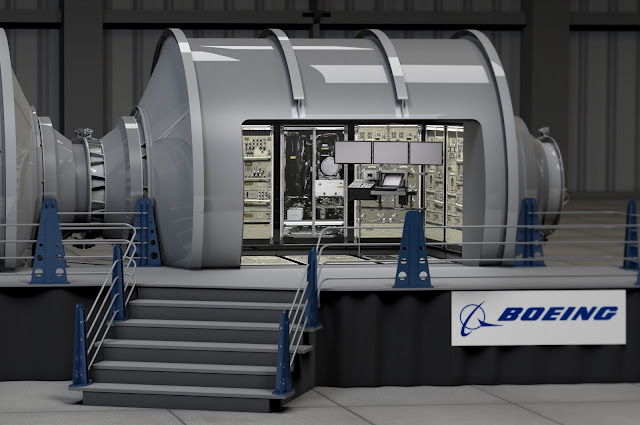ESO - European Southern Observatory logo.
27 July 2017
The Orion Nebula and cluster from the VLT Survey Telescope
Using new observations from ESO’s VLT Survey Telescope, astronomers have discovered three different populations of young stars within the Orion Nebula Cluster. This unexpected discovery adds very valuable new insights for the understanding of how such clusters form. It suggests that star formation might proceed in bursts, where each burst occurs on a much faster time-scale than previously thought.
OmegaCAM — the wide-field optical camera on ESO’s VLT Survey Telescope (VST) — has captured the spectacular Orion Nebula and its associated cluster of young stars in great detail, producing a beautiful new image. This object is one of the closest stellar nurseries for both low and high-mass stars, at a distance of about 1350 light-years [1].
The jewel in Orion’s sword
But this is more than just a pretty picture. A team led by ESO astronomer Giacomo Beccari has used these data of unparallelled quality to precisely measure the brightness and colours of all the stars in the Orion Nebula Cluster. These measurements allowed the astronomers to determine the mass and ages of the stars. To their surprise, the data revealed three different sequences of potentially different ages.
“Looking at the data for the first time was one of those ‘Wow!’ moments that happen only once or twice in an astronomer's lifetime,” says Beccari, lead author of the paper presenting the results. “The incredible quality of the OmegaCAM images revealed without any doubt that we were seeing three distinct populations of stars in the central parts of Orion.”
The Orion Nebula showing three populations of young stars
Monika Petr-Gotzens, co-author and also based at ESO Garching, continues, “This is an important result. What we are witnessing is that the stars of a cluster at the beginning of their lives didn’t form altogether simultaneously. This may mean that our understanding of how stars form in clusters needs to be modified.”
The astronomers looked carefully at the possibility that instead of indicating different ages, the different brightnesses and colours of some of the stars were due to hidden companion stars, which would make the stars appear brighter and redder than they really were. But this idea would imply quite unusual properties of the pairs, which have never before been observed. Other measurements of the stars, such as their rotation speeds and spectra, also indicated that they must have different ages [2].
Zooming in on the Orion Nebula
“Although we cannot yet formally disprove the possibility that these stars are binaries, it seems much more natural to accept that what we see are three generations of stars that formed in succession, within less than three million years,” concludes Beccari.
The new results strongly suggest that star formation in the Orion Nebula Cluster is proceeding in bursts, and more quickly than had been previously thought.
Panning across the Orion Nebula
Notes:[1] The Orion Nebula has been studied by many of ESO’s telescopes, including images in visible light from the MPG/ESO 2.2-metre telescope (eso1103) and infrared images from VISTA (eso1701) and the HAWK-I instrument on the Very Large Telescope (eso1625).
eso1103:
http://www.eso.org/public/news/eso1103/eso1701:
http://www.eso.org/public/news/eso1701/eso1625:
http://www.eso.org/public/news/eso1625/[2] The group also found that each of the three different generations rotate at different speeds — the youngest stars rotate the fastest, and the oldest stars rotate the slowest. In this scenario, the stars would have formed in quick succession, within a time frame of three million years.
More information:This research was presented in a paper entitled “A Tale of Three Cities: OmegaCAM discovers multiple sequences in the color magnitude diagram of the Orion Nebula Cluster,” by G. Beccari and colleagues, to appear in the journal Astronomy & Astrophysics.
The team is composed of G. Beccari, M.G. Petr-Gotzens and H.M.J. Boffin (ESO, Garching bei München, Germany), M. Romaniello (ESO; Excellence Cluster Universe, Garching bei München, Germany), D. Fedele (INAF-Osservatorio Astrofisico di Arcetri, Firenze, Italy), G. Carraro (Dipartimento di Fisica e Astronomia Galileo Galilei, Padova, Italy), G. De Marchi (Science Support Office, European Space Research and Technology Centre (ESA/ESTEC), The Netherlands), W.J. de Wit (ESO, Santiago, Chile), J.E. Drew (School of Physics, University of Hertfordshire, UK), V.M. Kalari (Departamento de Astronomía, Universidad de Chile, Santiago, Chile), C.F. Manara (ESA/ESTEC), E.L. Martin (Centro de Astrobiologia (CSIC-INTA), Madrid, Spain), S. Mieske (ESO, Chile), N. Panagia (Space Telescope Science Institute, USA); L. Testi (ESO, Garching); J.S. Vink (Armagh Observatory, UK); J.R. Walsh (ESO, Garching); and N.J. Wright (School of Physics, University of Hertfordshire; Astrophysics Group, Keele University, UK).
ESO is the foremost intergovernmental astronomy organisation in Europe and the world’s most productive ground-based astronomical observatory by far. It is supported by 16 countries: Austria, Belgium, Brazil, the Czech Republic, Denmark, France, Finland, Germany, Italy, the Netherlands, Poland, Portugal, Spain, Sweden, Switzerland and the United Kingdom, along with the host state of Chile. ESO carries out an ambitious programme focused on the design, construction and operation of powerful ground-based observing facilities enabling astronomers to make important scientific discoveries. ESO also plays a leading role in promoting and organising cooperation in astronomical research. ESO operates three unique world-class observing sites in Chile: La Silla, Paranal and Chajnantor. At Paranal, ESO operates the Very Large Telescope and its world-leading Very Large Telescope Interferometer as well as two survey telescopes, VISTA working in the infrared and the visible-light VLT Survey Telescope. ESO is also a major partner in two facilities on Chajnantor, APEX and ALMA, the largest astronomical project in existence. And on Cerro Armazones, close to Paranal, ESO is building the 39-metre Extremely Large Telescope, the ELT, which will become “the world’s biggest eye on the sky”.
Links:Research paper:
https://www.eso.org/public/archives/releases/sciencepapers/eso1723/eso1723a.pdfPhotos of the VLT Survey Telescope:
http://www.eso.org/public/images/archive/search/?adv=&subject_name=VLT%20Survey%20TelescopeESOcast 118 Light: A Tale of Three Stellar Cities (4K UHD):
http://www.eso.org/public/videos/eso1723a/ESO's Very Large Telescope (VLT):
http://www.eso.org/public/teles-instr/paranal-observatory/vlt/Images, Text, Credits: ESO/Richard Hook/Giacomo Beccari/IAU and Sky & Telescope/Videos: ESO, N. Risinger (skysurvey.org), Digitized Sky Survey 2. Music: Johan B. Monell (www.johanmonell.com).
Best regards, Orbiter.ch






















































